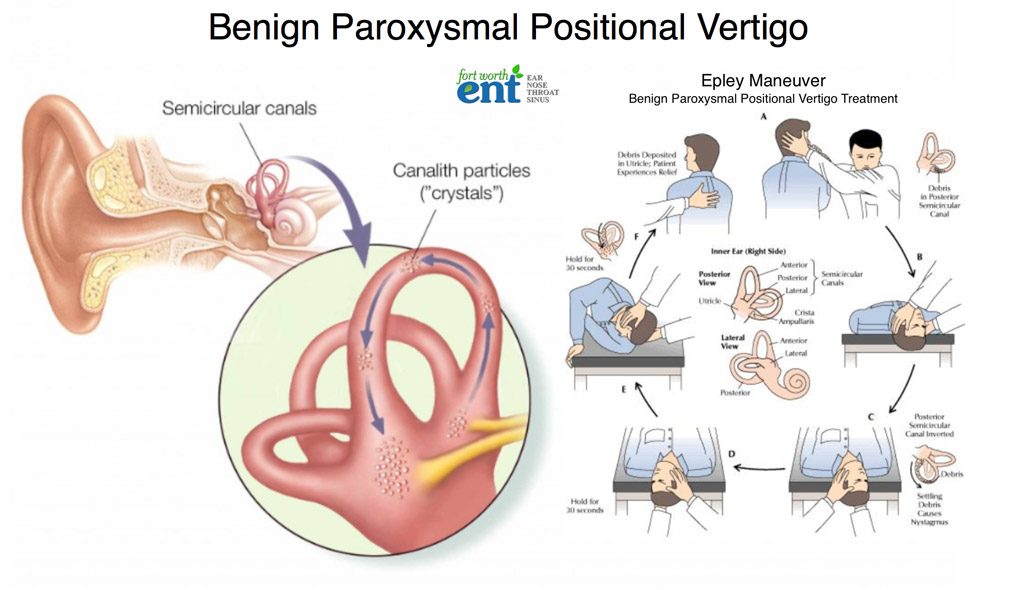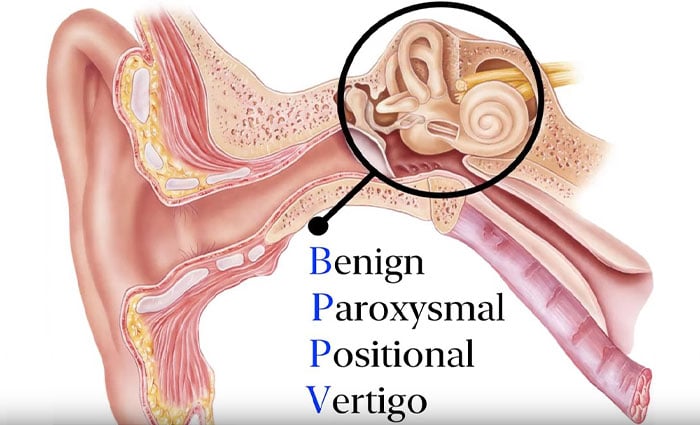Benign Paroxysmal Positional Vertigo (BPPV) Treatment-various aspects-
Benign paroxysmal positional vertigo (BPPV) is typically addressed through repositioning maneuvers, such as the Epley maneuver, to dislodge and reposition calcium carbonate crystals responsible for the dizziness. Medications are seldom employed and might not yield effective results. Surgical methods, like posterior canal occlusion, are contemplated in more serious instances.


Treatment Options:
Canalith Repositioning Maneuvers:
- Epley Maneuver: This is a widely recognized and effective maneuver that consists of a series of head and body movements designed to move the crystals out of the affected semicircular canal.
- Semont Maneuver: Another repositioning maneuver that is applicable.
- Brandt-Daroff Exercises: A collection of head movements that can aid in gradually habituating the vestibular system to the repositioning.
Medications:
- Anti-nausea Medications: Might be utilized to assist in managing nausea linked to vertigo.
- Vestibulosuppressant Medications: These medications can suppress the vestibular system but are not usually regarded as the primary treatment for BPPV and may not be particularly effective.
Surgery:
- Posterior Canal Occlusion: This surgical intervention can obstruct the affected canal and might be considered in situations where repositioning maneuvers do not work or in patients with recurrent BPPV.
If Any Patient of ENT Requires Any Surgery, Opd Consultation Or Online Consultation In Clinic of ENT Specialist Doctor Dr. Sagar Rajkuwar ,He May Contact Him At The Following Address-
Prabha ENT Clinic, Plot no 345,Saigram Colony, Opposite Indoline Furniture Ambad Link Road ,Ambad ,1 km From Pathardi Phata Nashik ,422010 ,Maharashtra, India-Dr. Sagar Rajkuwar (MS-ENT), Cell No- 7387590194, 9892596635
Other Considerations:
Vestibular Rehabilitation:
Physical therapy exercises, including gaze stability exercises, can assist the vestibular system in acclimatizing to balance changes.
Vitamin D and Calcium:
Certain studies propose that vitamin D and calcium supplementation might aid in decreasing the recurrence of BPPV.
Activity Modification:
Refraining from activities that induce vertigo and taking measures to avoid falls during vertigo episodes are crucial.
In summary, the main treatment for BPPV entails repositioning maneuvers to relocate misplaced crystals, with additional options such as medications and surgery accessible for more complicated cases.
Treatment
Benign paroxysmal positional vertigo may resolve independently within a few weeks or months. However, to assist in alleviating BPPV more quickly, your doctor, audiologist, or physical therapist might treat you with a sequence of movements referred to as the canalith repositioning procedure.


Canalith repositioning
Conducted in your doctor’s office, the canalith repositioning procedure involves several straightforward and gradual maneuvers aimed at adjusting your head. The objective is to relocate particles from the fluid-filled semicircular canals of your inner ear into a small bag-like area (vestibule) that contains one of the otolith organs in your ear, where these particles do not cause issues and can be absorbed more easily.
Each position is maintained for approximately 30 seconds after any symptoms or unusual eye movements cease. This procedure typically proves effective after one or two sessions.
Your doctor will probably instruct you on how to perform the procedure on your own so that you can do it at home if necessary.
Surgical alternative
In infrequent cases where the canalith repositioning procedure is ineffective, your doctor may suggest a surgical option. During this procedure, a bone plug is utilized to obstruct the section of your inner ear that is inducing dizziness. The plug prevents the semicircular canal in your ear from responding to movements of particles or head movements more broadly. The success rate for canal plugging surgery is roughly 90%.
For Update On Further Important Health Related Topics And Frequently Asked Questions On Health Topics By General Population Please Click On The Link Given Below To Join Our WhatsApp Group –
https://chat.whatsapp.com/Lv3NbcguOBS5ow6X9DpMMA
Diagnosis
Your physician may conduct several tests to identify the reason for your dizziness. During a physical examination, your physician will likely check for:
- Indicators and signs of dizziness that are triggered by eye or head movements and then subside in less than one minute
- Dizziness associated with particular eye movements that arise when you recline with your head turned to one side and slightly tipped beyond the edge of the examination table
- Involuntary eye movements from side to side
- Difficulty managing your eye movements
If your physician is unable to determine the cause of your signs and symptoms, he or she may suggest further testing, such as:
- Electronystagmography (ENG) or videonystagmography (VNG). The goal of these tests is to identify abnormal eye movement. ENG (which utilizes electrodes) or VNG (which employs small cameras) can assist in determining if dizziness is a result of inner ear disease by analyzing involuntary eye movements while your head is positioned differently or your balance organs are stimulated with water or air.
- Magnetic resonance imaging (MRI). This procedure utilizes a magnetic field and radio waves to generate cross-sectional images of your head and body. Your physician can use these images to pinpoint and diagnose a variety of conditions. MRI may be conducted to eliminate other potential causes of vertigo.
Manner of living & Natural remedies
If you experience dizziness related to BPPV, consider these suggestions:
- Be mindful of the potential for losing your balance, which may result in falling and severe injury.
- Avoid movements, such as tilting your head upward, that trigger the symptoms.
- Sit down without delay when you feel dizzy.
- Utilize adequate lighting if you rise at night.
- Walk with a cane for support if you are at risk of falling.
- Collaborate closely with your doctor to effectively manage your symptoms.
BPPV may recur even after effective treatment. While there is no cure, the condition can be handled with physical therapy and home remedies.


Can BPPV go away permanently?
While Benign Paroxysmal Positional Vertigo (BPPV) can frequently resolve independently or through treatment, it is not a lasting condition and may reappear. BPPV results from loose crystals in the inner ear that interfere with the balance system. Treatment, such as the Epley maneuver, focuses on relocating these crystals. Even after an effective treatment, BPPV has the potential to return, especially in people with risk factors such as migraines or head injuries.
Here’s a more detailed explanation:
BPPV can resolve on its own:
In some instances, the crystals in the inner ear may settle spontaneously, resulting in the disappearance of BPPV symptoms without any treatment.
Treatment can be effective:
The Epley maneuver and other repositioning techniques are effective in realigning the crystals and alleviating BPPV symptoms.
BPPV can recur:
Even after successful treatment, BPPV may return. This is more prevalent among certain individuals, such as older adults or those with particular risk factors.
Prevention is key:
Maintaining proper sleep posture, managing stress, and engaging in balance exercises can assist in lowering the chances of BPPV recurrence.
Medical intervention is important:
If BPPV symptoms are severe, ongoing, or associated with other alarming symptoms, obtaining medical assistance is essential.
If Any Patient of ENT Requires Any Surgery, Opd Consultation Or Online Consultation In Clinic of ENT Specialist Doctor Dr. Sagar Rajkuwar ,He May Contact Him At The Following Address-
Prabha ENT Clinic, Plot no 345,Saigram Colony, Opposite Indoline Furniture Ambad Link Road ,Ambad ,1 km From Pathardi Phata Nashik ,422010 ,Maharashtra, India-Dr. Sagar Rajkuwar (MS-ENT), Cell No- 7387590194, 9892596635
Issued In Public Interest By –
www.entspecialistinnashik.com





